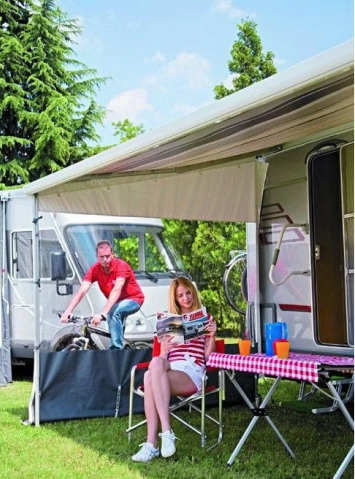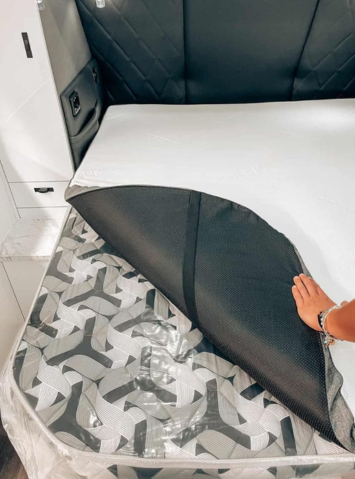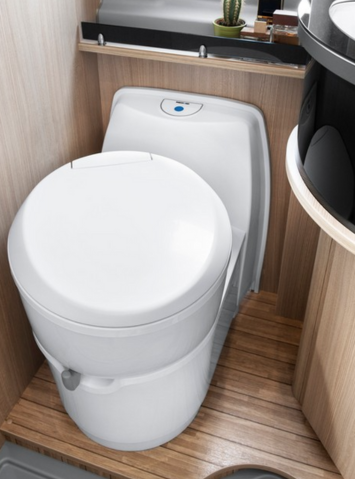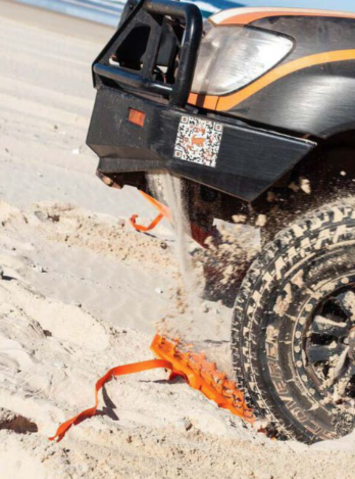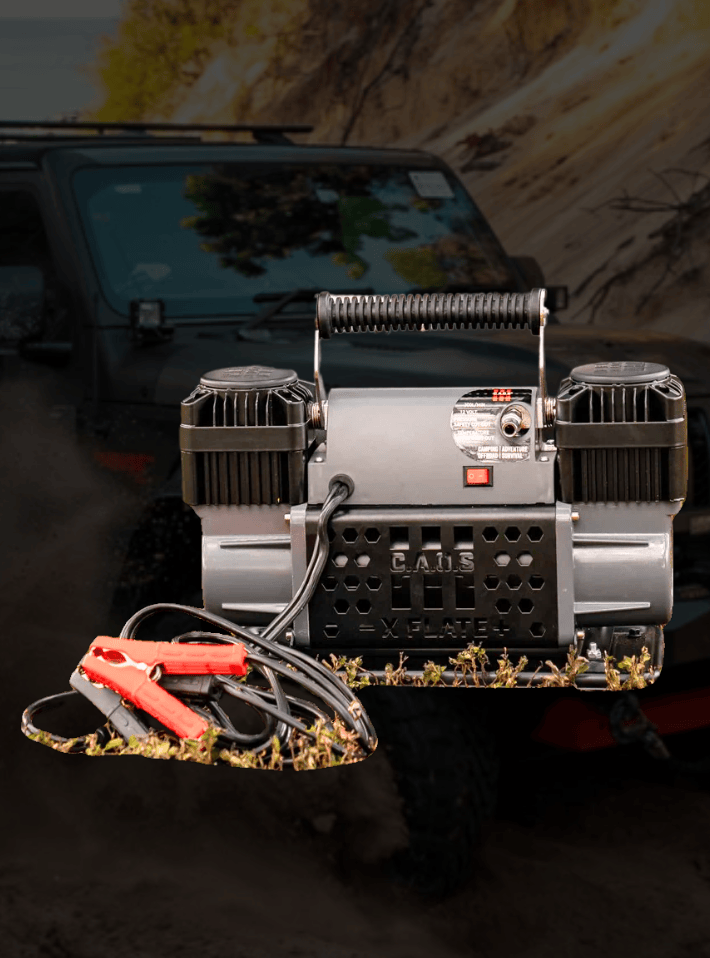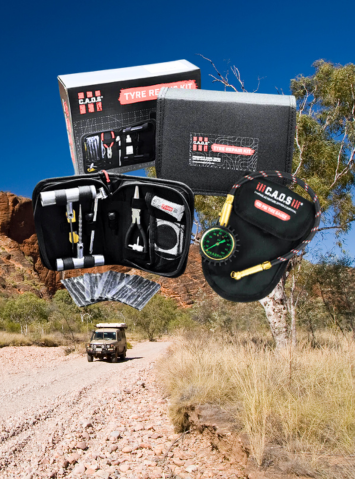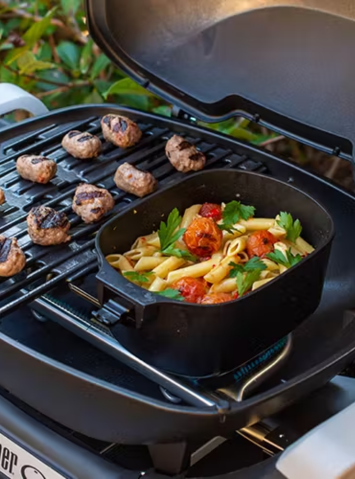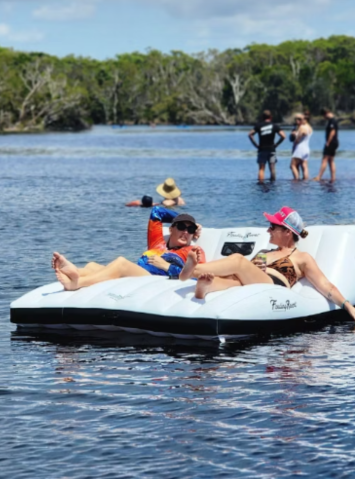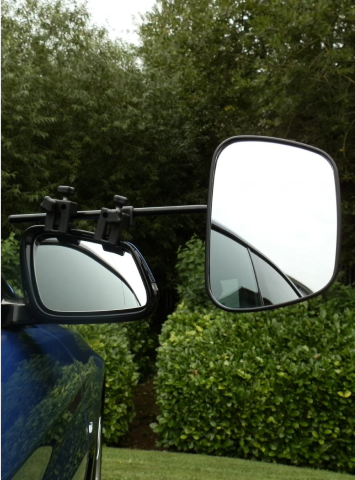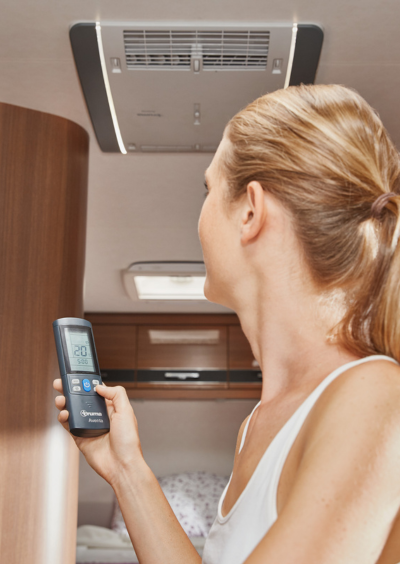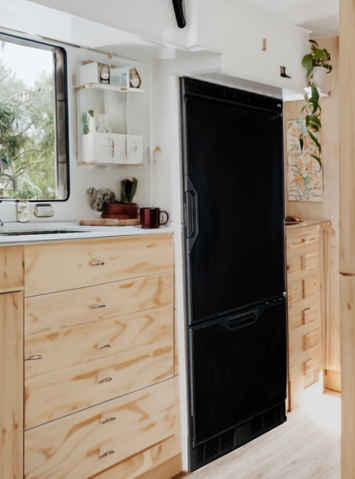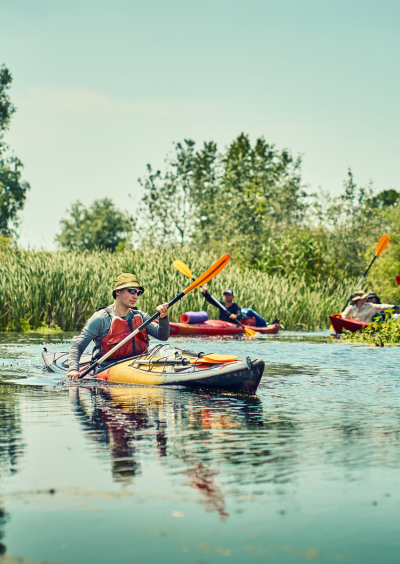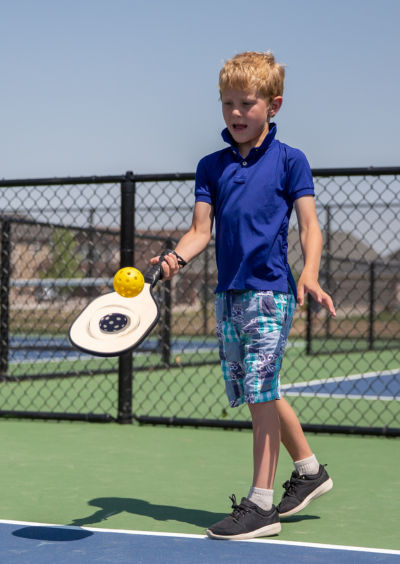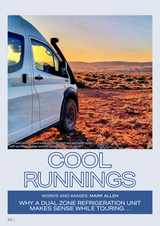4WD Packing Essentials
15th Dec 2022
Lists are the best thing. They help you get organised and they help you not to forget the important stuff. They’re not only great for packing for your trip, but also when you’re packing down to return, to make sure you haven’t left anything behind.
In other words, they’re super important when planning your off-road adventure!
Everything Caravan & Camping has done the hard yards for you with some great lists here, but before we get into them, Let’s talk basics first:
1. Get Organised
Organise your house:
- Get someone to check your mail, water your plants, and take out your bins
- Try not to organise deliveries to arrive while you’re away
- Tell your neighbours when you’re going and when you’ll be back and ask them to use your driveway whenever they want so it looks like someone is home. Let them know if anyone is coming over to check your mail, plants, or bins, and give them contact details of someone to call in an emergency.
- Invest in security cameras if you can, or set up light timers/radios/TVs to go off so that it looks like your house is not vacant
Organise your paperwork. Make sure you take these with you:
- Vehicle registration
- Vehicle insurance documents
- Any necessary permits required for entry to certain reserves or national parks
- Your vehicle manual/handbook as you never know when you’ll need to refer to it!
2. Get Filled
Make sure you start with a full tank and knowledge of fuel stations along your chosen route. If you’re heading into “The Never-Never” make sure you have a long range fuel tank.
3. Get Weighed
Your 4WD has a maximum load capacity specified in your vehicle’s manual so keep this mind, for no matter how well you pack things snugly, there is only so much your 4WD can safely carry.
Remember that any additional weight – and that includes passengers, fuel, accessories, tyres and everything you put inside your 4WD - adds to that maximum payload. And if you’re towing anything, you’ll have to add that in too. Work out approximately how much your load weighs, or if you want a more accurate measure, head to your local weighbridge.
A lighter load not only ensures less stress on your vehicle - and on your time packing and unpacking - but also puts less stress on your wallet as fuel consumption will not be as high as with a heavy load.

Travelling with others helps share the weight of combined necessities between you. There is no need to carry more than one tool kit but more than one First Aid Kit. Even Showers, Portable Toilets, Camping Ovens and Gas Cookers can be shared between you.
You may weigh less on the way home when all the food is gone so on the return trip, pack things in such a way as to spread the weight load evenly.
4. Get Safe
Pack the heaviest items like Water Tanks, Gas Canisters and Jerry Cans as close to the floor as possible and either in front of or close to the axle, keeping the centre of gravity focused there as much as possible. If it all is packed towards the rear of the 4WD it will affect how your vehicle handles the road, and can create a dangerous tendency towards tipping.

Any loose items can become dangerous projectiles when off-road driving especially as you navigate extremely rough terrain. Consider using a cage or some sort of Cargo Barrier/Divider to avoid items being hurled into the front of the car when the going gets tough. Either way, all heavy items must be held in place with Ratchet Straps, whether or not a Cargo Barrier is used.

Be careful what you put on your roof racks. Not only will fuel consumption be affected by the roof load causing drag, but the higher the item on your roof, the higher your centre of gravity, and the chance that your 4WD can tip over, and this is especially dangerous under windy conditions.

Only put lightweight items such as Tents or Foldable Camping Chairs, or those items which are too long or awkwardly shaped to fit in your 4WD, onto your roof rack, making sure you secure them well. Aerodynamic roof pods work better and are more fuel efficient and less noisy than random shapes of bags and equipment on the car. Don't forget you have stuff on your roof before driving into an underground shopping centre carpark – you don’t want that “off-road” location to be your final destination!
5. Get Convenient
Pack the items you won’t need to access much first – you don’t want to have to unpack everything every time you stop to find your wallet, camera, snacks or drinks. Don’t forget the items you will need as soon as you get to your destination - things like Torches or Cooking items if you intend to set up, cook and eat when you get there.

Plug any gaps snugly with small items like boots, or soft items like jackets and Sleeping Bags, looking out for odd-shaped spaces to store things like swimming flippers.
Group items into themes like food, clothes, cooking equipment, and pack them in boxes which can easily be stacked on top of each other or side by side; label them to find items easily.
6. Get Packing!
Know the space you have available - lay out everything you need to take with you to give you a birds-eye-look at what you want to fit in your 4WD. Too much? Get ruthless and cull back what you don’t need, but be careful when you do this. Consider the most important stuff first. Prioritise what’s essential to your trip and put these essential items into a spreadsheet so you can check them off on each trip.
Some tips:
- Careful when packing aluminium cans and cardboard cartons as they may wear through/split if they rub against each other too much
- Store containers of liquid upright in individual Ziplock plastic bags to prevent leaking
- Use storage jars with tight screw-top lids and tape down the lids for extra security
- Keep your Fridges/Eskies on the left (west) side of the car when travelling north, and on the right (east) side when travelling south as driving for a few hours with the sun beating through the rear and side windows can heat things up real fast!

Now for our lists of Basics…
I: Basic Emergency Essentials:
A comprehensive First Aid Kit is essential and should be packed suited for where you’re heading. It should include the following (also check our recent blog on Essential First Aid items for more ideas):
- Insect Bite/Rash Cream
- Burn Cream
- Sunburn Cream
- Band-Aids, Bandages and Slings
- Headache Tablets/Powders
- Antihistamine Tablets
- Cough Medicine and Throat Lozenges
- Eye and Ear Drops
- Bottled water for medication or washing wounds
Next make sure you pack a Safety Kit which includes:
- Fire Extinguisher and Fire Blanket
- Portable Lighting - Lanterns, Torches, Head Lamps (insert fresh batteries before you leave, and carry spares)
- Fire Lighting Materials (optional) – Paper, Matches, Firelighters, cigarette lighter, kindling, flint starter
- Heavy Duty Gloves
- Hunting Knife or an Axe
- Shovel (folded, for space)
- Emergency Communications (Satellite Phone, UHF CB Radio, PLB/Emergency Beacon, Flares)
- Quality Rope
- Maps and other information about the area, both electronic and printed
- Compass/GPS
- Emergency food rations that don’t require refrigeration, such as cereal bars, nuts, beef jerky, tinned fish/meat and vegetables, trail mix
- One Backpack per vehicle in case of walking/hiking emergency
II: Basic Vehicle Essentials:
Your 4WD should be in top condition before you take a trip but it’s always a good idea to pack a Basic Tool and Vehicle Recovery Kit so that you are prepared for anything that might go wrong when off-roading. The Kit should include the following to suit your vehicle:
- Adjustable Spanner and Socket Wrench Set
- Multi Grip Pliers
- Wire Cutters
- Hammer and Chisel
- Assorted Screwdrivers
- Assorted Nuts, Bolts, Washers
- Allen Key Set
- Rated D Shackles
- Electrical Tape, Gaffer Tape, Insulation Tape
- Snatch Straps
- Cable Ties/Electrical Ties
- Tube of Silicone (High Temperature)
- Spare Tyre plus Tyre Repair Kit - Portable Air Compressor/Tyre Pump, and Tyre Pressure Gauge
- Tow Strap
- Spare Key/s for your vehicle
- Jumper Leads
III: Basic Camping Equipment:
- Tent, Annex, Pegs, Poles, Ropes
- Sleeping Bag, Swag, Stretcher, Air Bed or other form of Mattress, with manual air pump
- Blankets, Doonas, Pillows, Sheets
- Groundsheet and Plastic Tarps
- Bucket, Bowls, Plastic Containers, Funnel
- Camping Stools or Seats
- Fold-Up Table and Chairs
- Doormat
- Fly Nets in summer
IV: Basic Personal Essentials:
Where possible, store these in Ziplock bags to keep them clean and dry
- Insect Repellent
- Toilet Paper
- Hand Sanitiser, Anti-Bacterial or Baby Wipes (great when there are water shortages)
- Toothpaste, Toothbrush
- Paper Towels
- Soap
- Shampoo, Conditioner, Hairbrush, Comb
- Mirror
- Shaving Gear (Razor, Blades or 12V Electric Shaver)
- Any Medications you may need
- Battery Charger (for Mobile Phones, Communication Devices)
- Camera (in dust/waterproof bag)
- Water Purification and Hydration Tablets
- Identification, Driver’s Licence, Cash and Credit Cards
- Washing Powder for Cold Water
- Small Clothesline and Pegs may come in handy
- Umbrella, Wet Weather Gear
- Emergency Blanket when the temperatures drop low
V: Basic Cooking Essentials:
- Esky or Car Fridge
- Portable Gas Stove and/or BBQ Plate
- Cooking Stand
- Camp Oven for Open Fire Cooking
- Spare Gas Canisters – make sure you store these well away from heat and 12v outlets
- Cooking Equipment (including a billy) like tin/plastic mugs, bowls and plates (use break-resistant plates & containers wherever possible)
- Cutting Board and BBQ Tools
- Rubbish Bags (also ones that mount on your spare tyre to keep food smells out of the cabin; these can also be used for wet or dirty clothes)
- Bottle Opener, Can Opener
- Cooking Utensils - tongs, egg lifter, preparation knife, scissors, toasting fork
- Frying Pans, Saucepans, Griller, Billy and Lid
- Complete Cutlery and Crockery Sets– it’s best you have them packed in a labelled box and ready for camping, rather than raiding your kitchen each time you leave.
- Tea Towels
VI: Basic Food/Drink Supplies:
Pack plenty of water – no less than 3 litres per person per day; and double that if you’re going to an isolated area or if it is warm weather. Make sure you take lots of food, ideally twice the amount you would normally need for the duration of your trip. Apart from meat, vegetables and fruit, make sure you include these:
- Cooking Oil
- Condiments/Spreads – Honey, Jam, Vegemite, Peanut Butter – keep these in small portion-control jars for easy disposal and to avoid contamination.
- Bread
- Butter/Margarine
- Long-Life/Powdered/Canned Milk – once it’s opened, ensure it’s sealed well with a bulldog clip if in a carton; better yet - buy them in small sizes
- Eggs (keep in their carton, secured with an elastic band)
- Pepper, Salt, Spices and Sauces
- Tea, Coffee and Sugar
VII: Basic Clothing:
- Protective Clothing (Sunscreen, Hat, Sunglasses, Rubber Boots)
- Underwear (yes, easily forgotten!)
- Pyjamas (ditto above!)
- Walking Shoes or Boots including rubber boots when wet/muddy
- Waterproof Sneakers or Sandals for wading through creek crossings
- Lightweight Protective and Waterproof Clothing - takes up less space and protects from wind and rain, no matter the season
- Winter Clothes should include Sweaters, Lightweight Thermal Jackets and Windbreakers. Don’t forget to keep your head warm with a warm woollen Beanie or Hooded Jacket.
- Summer Clothes should include Shorts, Thongs, Swimsuits
VIII: Basic Cleaning Essentials:
- Detergent and Laundry Powder
- Towels
- Dishwashing Detergent, Steel Wool, Dishwashing Brush and Washing Up Bowl
And lastly…
7. Get Going!
As you can see, there’s a lot to keep in mind when you plan your 4WD Trip and it may feel daunting at first, but with practice, you’ll be acing your packing in next to no time. Ready, Set, Go! Happy Adventuring!
